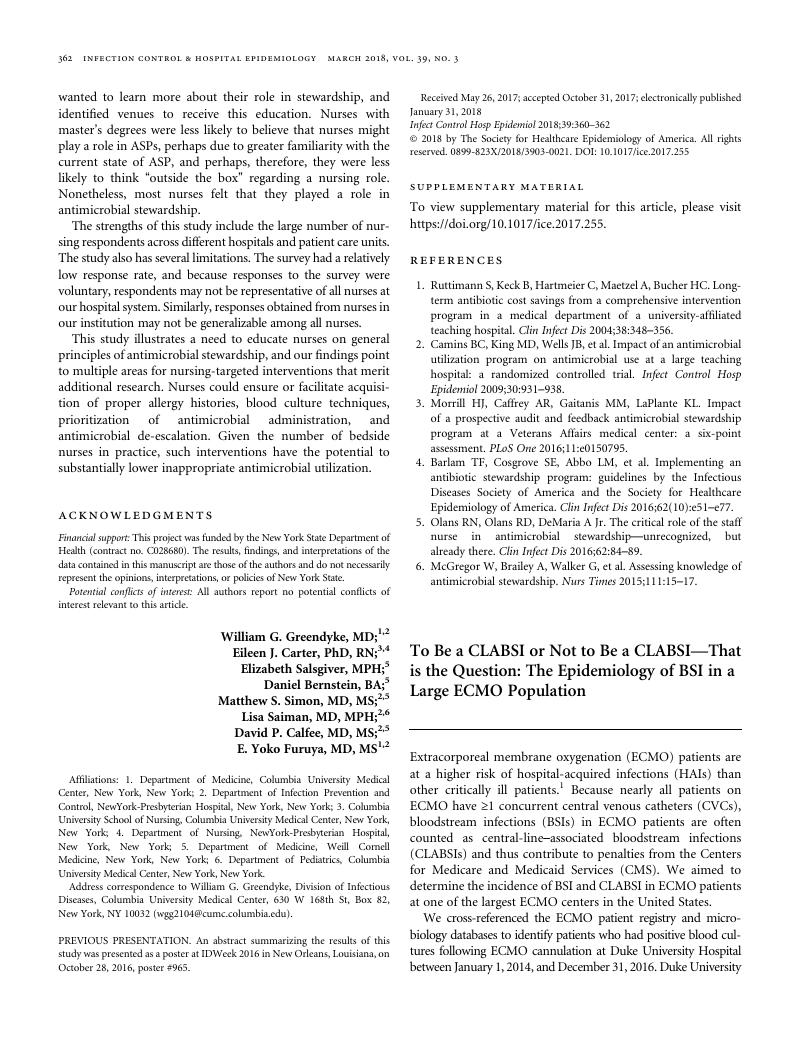Crossref Citations
This article has been cited by the following publications. This list is generated based on data provided by Crossref.
MacLaren, Graeme
Schlapbach, Luregn J.
and
Aiken, Alexander M.
2020.
Nosocomial Infections During Extracorporeal Membrane Oxygenation in Neonatal, Pediatric, and Adult Patients: A Comprehensive Narrative Review.
Pediatric Critical Care Medicine,
Vol. 21,
Issue. 3,
p.
283.
Li, Xiyuan
Wang, Liangshan
Wang, Hong
and
Hou, Xiaotong
2022.
Outcome and Clinical Characteristics of Nosocomial Infection in Adult Patients Undergoing Extracorporeal Membrane Oxygenation: A Systematic Review and Meta-Analysis.
Frontiers in Public Health,
Vol. 10,
Issue. ,
Harita, Shimpei
Hamaguchi, Jun
Shimizu, Keiki
and
Honda, Hitoshi
2022.
Respiratory extracorporeal membrane oxygenation and central-line–associated bloodstream infection: Experience at a tertiary-care center during the coronavirus disease 2019 (COVID-19) pandemic.
Infection Control & Hospital Epidemiology,
Vol. 43,
Issue. 1,
p.
113.
Yang, Liuting
Li, Min
Gu, Sichao
Feng, Yingying
Huang, Xu
Zhang, Yi
Tian, Ye
Wu, Xiaojing
Zhan, Qingyuan
and
Huang, Linna
2022.
Risk factors for bloodstream infection (BSI) in patients with severe acute respiratory distress syndrome (ARDS) supported by veno–venous extracorporeal membrane oxygenation (VV–ECMO).
BMC Pulmonary Medicine,
Vol. 22,
Issue. 1,
Wang, Joseph
Christensen, Cason
Siddique, Aleem
Merritt, HelenMari
and
Cawcutt, Kelly
2022.
Characteristics of venous‐venous extracorporeal membrane oxygenation related bloodstream infections.
Journal of Cardiac Surgery,
Vol. 37,
Issue. 5,
p.
1431.
Ait Hssain, Ali
Vahedian-Azimi, Amir
Ibrahim, Abdulsalam Saif
Hassan, Ibrahim Fawzy
Azoulay, Elie
and
Darmon, Michael
2024.
Incidence, risk factors and outcomes of nosocomial infection in adult patients supported by extracorporeal membrane oxygenation: a systematic review and meta-analysis.
Critical Care,
Vol. 28,
Issue. 1,



